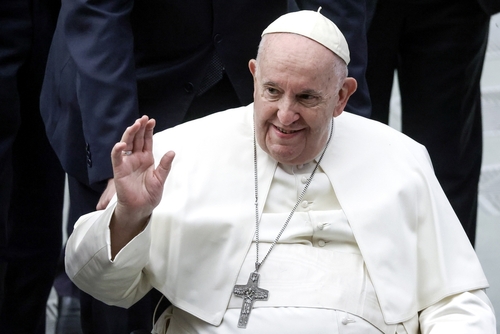Pope Francis has selected 80% of the cardinals who will elect his successor, but the tension between tradition and modernization within the Catholic Church remains unresolved. His transformative leadership challenges long-standing conventions and sparks discussions about the church’s future direction.
Pope Francis’s Transformative Papacy
Pope Francis’s leadership has brought a wave of change to the Catholic Church. His papacy confronts historical norms and is known for addressing environmental protection, social justice, and acceptance. Cardinal Luis Antonio Tagle, a known advocate for the Pope’s progressive stance, taught him the ‘I love you’ hand sign during a 2015 visit, symbolizing the new openness within the Church.
🚨 BREAKING NEWS:
The Vatican has announced that Pope Francis’ condition has worsened, now diagnosed with a polymicrobial respiratory tract infection. Recent tests reveal a complex clinical picture, requiring an extended hospital stay for the 88-year-old Pontiff in Rome.… pic.twitter.com/xXiS92wBeG
— Patrick Coffin (@CoffinMedia) February 17, 2025
Francis’s emphasis on contemporary society has drawn both admiration and criticism. Detractors label him the “woke Pope,” while others commend his ability to connect faith with modern-day issues. However, this transformative approach has also deepened divisions, raising questions about the trajectory of the church under future leadership.
Deciding the Successor
Pope Francis has appointed 110 out of the 138 eligible cardinals to vote for the next pope. Though this suggests a potential progressive influence on the upcoming conclave, experts remain cautious about assuming the outcome. Dr. Ivereigh cautions, “The idea that these cardinals will necessarily think like Francis is complete nonsense; it’s trite. They’re knowledgeable people who think for themselves.”
Please pray for Pope Francis 🙏 pic.twitter.com/4YTTmqfyu3
— Deacon Jim Friend (@JimFriend) February 25, 2025
Pope Francis’s health issues, including double pneumonia and kidney failure, have raised concerns about a new election. The Vatican maintains transparency about his health, prompting discussions on potential successors, such as Cardinal Pierbattista Pizzaballa and Cardinal Matteo Zuppi.
The Conclave Process
The election of a new pope is an intricate process. Upon the Pope’s passing, a nine-day mourning period known as Novendiale is observed. Cardinals under 80 gather in the Sistine Chapel for a secretive election, requiring a two-thirds majority for a new pope to emerge. The announcement comes with “Habemus papam,” followed by the new pope’s first address from St. Peter’s Basilica.
Catherine Pepinster asserts, “Plotting is always part of the run-up to a papal election,” indicating the complex interplay of politics and faith during the conclave. With conservative and moderate candidates also in the running, including Hungarian churchman Peter Erdo and Cardinal Pietro Parolin, the church faces an uncertain future.
The Catholic Church is at a crossroads between its historical traditions and a modern, progressive path. As the church prepares for a potential leadership transition, its direction remains a point of contention among its diverse global community. The subsequent papal election will shape the Church’s approach to modern societal challenges.
Sources:
https://www.yahoo.com/news/pope-francis-loaded-dice-ensure-132034745.html
https://www.dailymail.co.uk/news/article-14437795/Pope-Francis-conservative-campaign-successor.html

